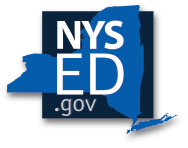Perkins Application
Perkins Allocations
Perkins Application Guidance
- NEW: Perkins Application Guidance
- NEW: Perkins Application Standalone Flexibilities Guidance
- Grants Finance Fiscal Guidance
- Perkins FAQ
Perkins Application
2025-26 Perkins applications are due to the Office of Career and Technical Education by 6/1/25.
Email an electronic copy of the Perkins Application which includes the 2025-26 Perkins Application (in Word format), Transmittal Letter, and FS-10 (in Excel format) to the Office of CTE and send the hard copy Perkins Application, Transmittal Letter, and FS-10 with original signatures to:
Office of Career and Technical Education
New York State Education Department
89 Washington Ave, Rm 315EB
Albany, NY 12234
- 2025-26 Perkins Application (updated 5/8/2025 with new text fields)
- Fund Use Agreement Form
- FS-10 Budget Form and FS-10-A Budget Amendment Form
- FS-10-F Final Expenditure Report due to NYSED Grants Finance Office by 9/30/25
Send one FS-10-F Final Expenditure Report with original signature and one copy toGrants Finance
New York State Education Department
89 Washington Ave, Room 510W EB
Albany, NY 12234
For previous years Perkins application materials, please see the Archived Perkins Materials webpage.





